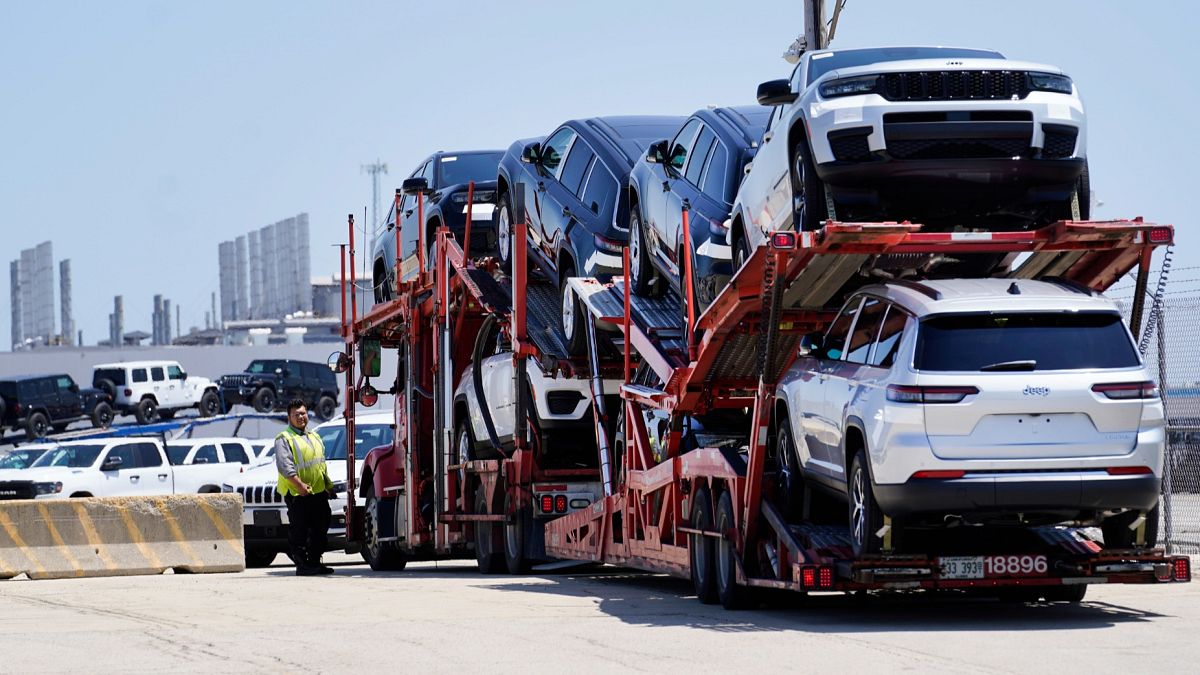

In a world where economic landscapes shift as swiftly as the tides, the evolving dynamics between the United States and the European Union present both challenges and opportunities. As these two economic powerhouses engage in complex negotiations and trade deals, understanding the impacts and adaptations of the involved parties remains essential.
At the heart of these challenges lies the automotive sector, where Stellantis, a major player, forecasts a substantial economic impact due to recently imposed US tariffs. The company anticipates a €1.5 billion setback resulting from these tariffs, which affect not only whole vehicles but also various car parts. While these regulatory changes pose significant challenges, Stellantis and other industry leaders continue to adapt strategies to navigate the tumultuous trade environment.
Simultaneously, Europe is witnessing a critical juncture in its budget management. The European Commission has outlined an ambitious proposal for a €2 trillion long-term budget which seeks to integrate agricultural and cohesion fund allocations. This move, while seen as efficient by key figures like Commission President Ursula von der Leyen, faces criticism for potentially jeopardizing the development of rural and regional areas. The delicate balancing act between economic efficiency and equitable regional development continues to be a discussion point among policymakers and stakeholders.
Meanwhile, the global trading sphere is marked by the recently concluded US-EU trade deal, which introduces a 15% tariff rate—a compromise from the previously looming threat of 30%. Nevertheless, this agreement has effectively raised tariffs on EU goods from 1.2% to 17%, a significant increase that bears implications for future growth. As the entities on either side of the Atlantic process the nuanced terms of this deal, differing interpretations of its content have sown seeds of confusion. These mixed messages reflect the complexity of multinational trade agreements where interpretations and priorities may vary.
Interestingly, amidst this diplomatic dance, the investment climate is experiencing its own shifts. With mounting concerns about instability in the US market, a palpable shift towards UK stocks has been noted. Investors cite the higher-risk perception of US assets as a driving force steering their capital overseas. This movement underscores the dynamic nature of international investments, where political and economic signals continually influence global market strategies.
As these multifaceted economic narratives unfold, stakeholders across industries and regions remain focused on adapting to the changing external conditions. Firms like Stellantis are investigating ways to mitigate tariff impacts, potentially through diversification of production sites or exploring new markets, while the European Union deliberates on budget allocations that support comprehensive regional development.
In conclusion, the prevailing economic ties between the US and EU, defined by both cooperation and contention, offer a complex yet navigable landscape. Through mindful negotiation and strategic adaptation, there are opportunities to foster a resilient economic future. As all parties involved continue to seek common ground and innovative solutions, they exemplify the perseverance needed to thrive in an interconnected world economy.
Source: {link}
